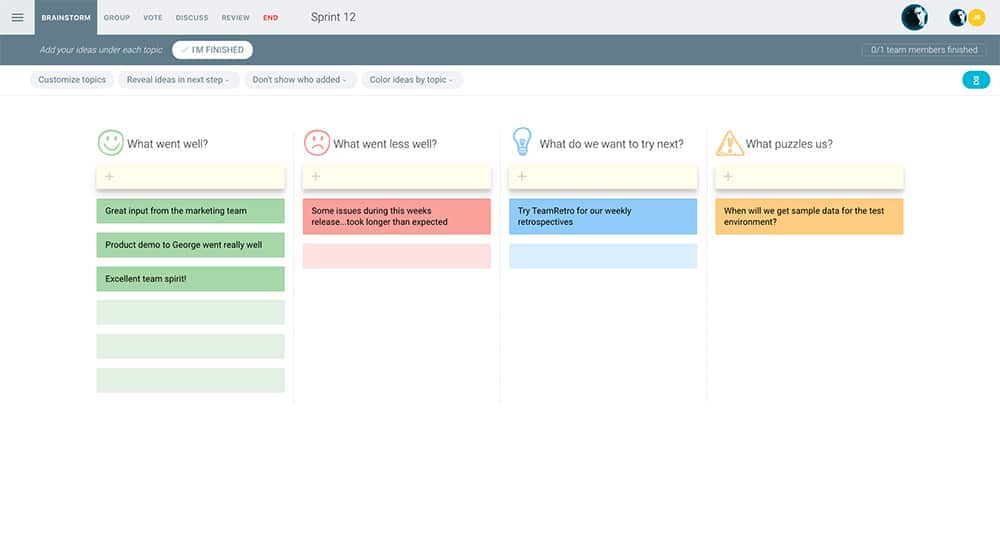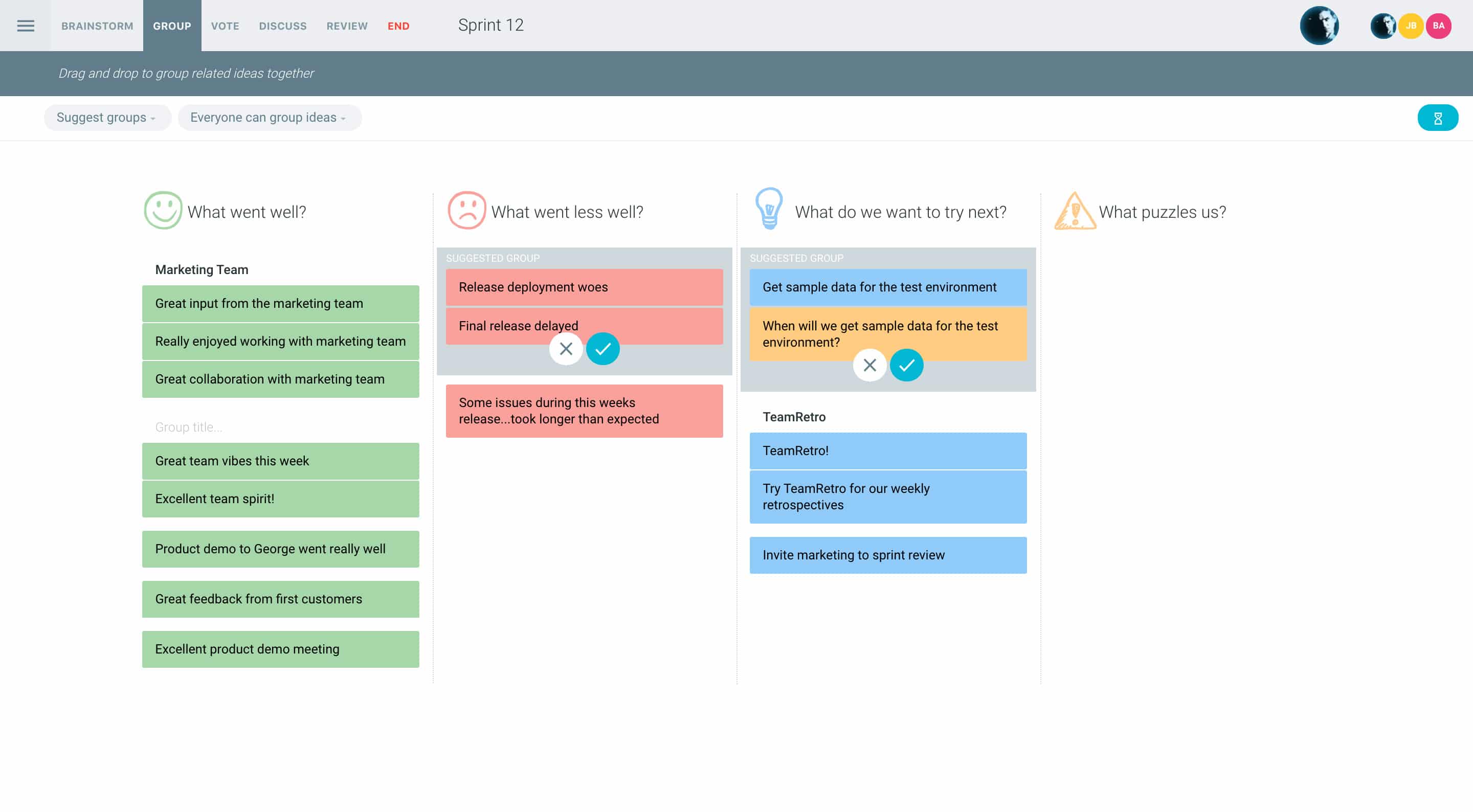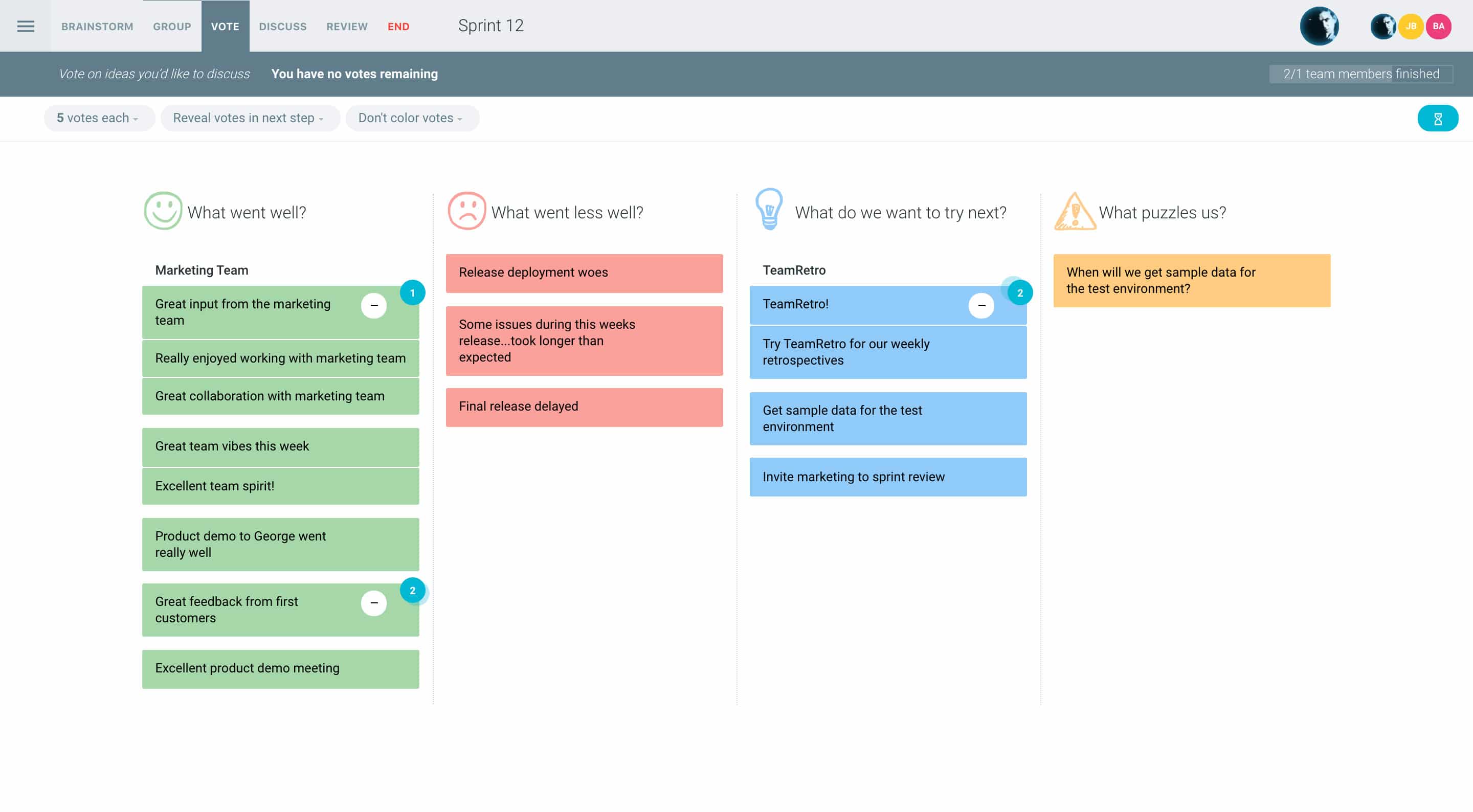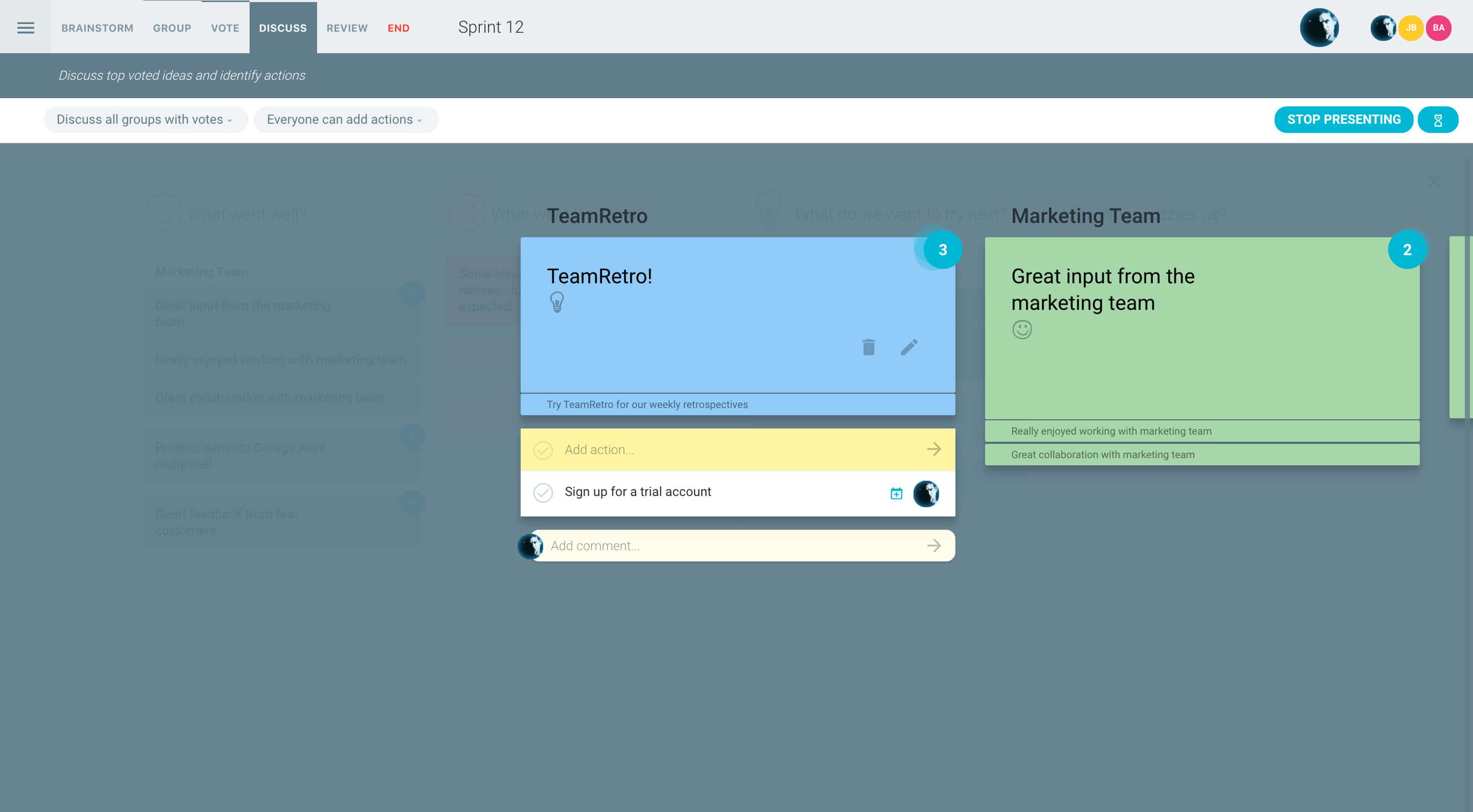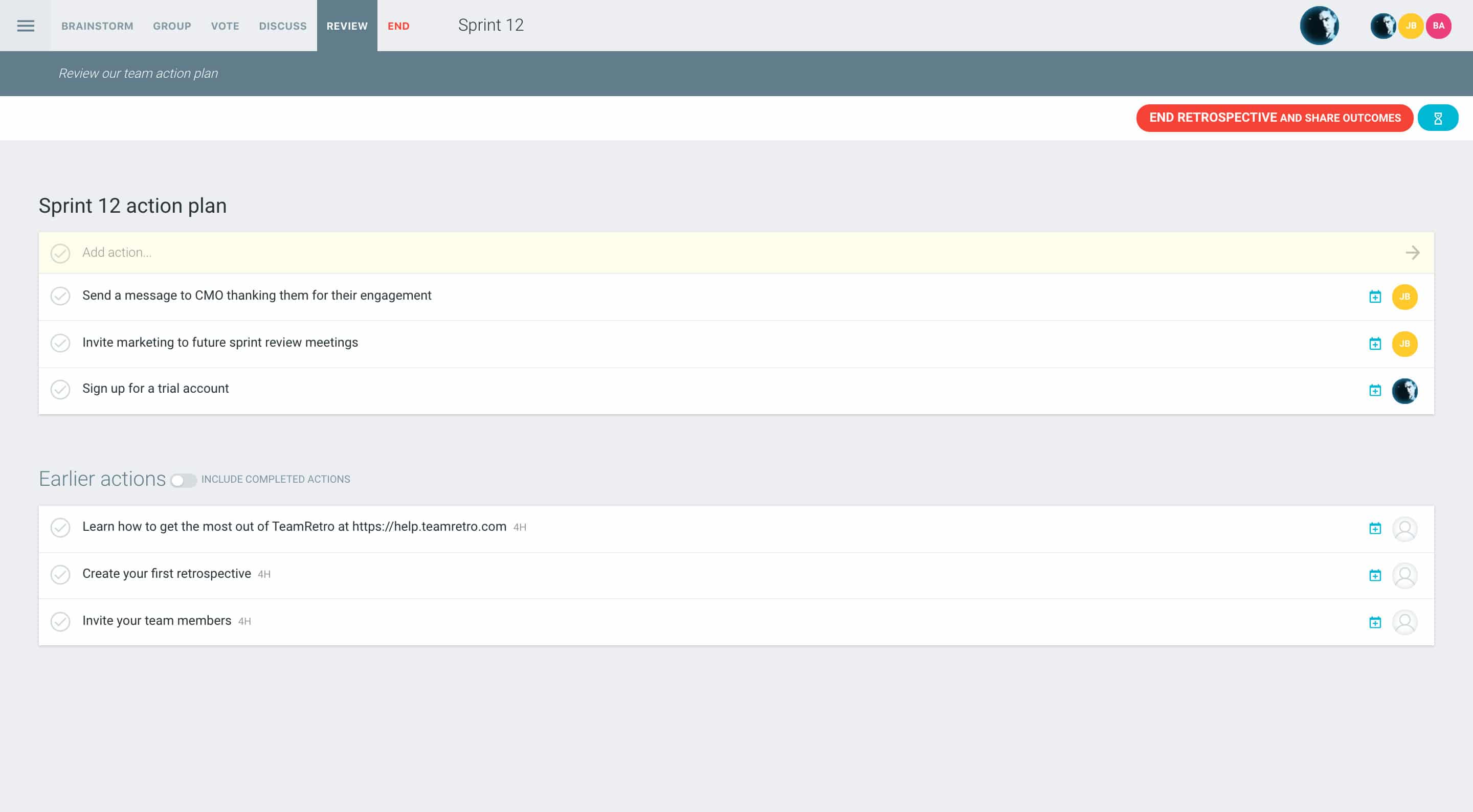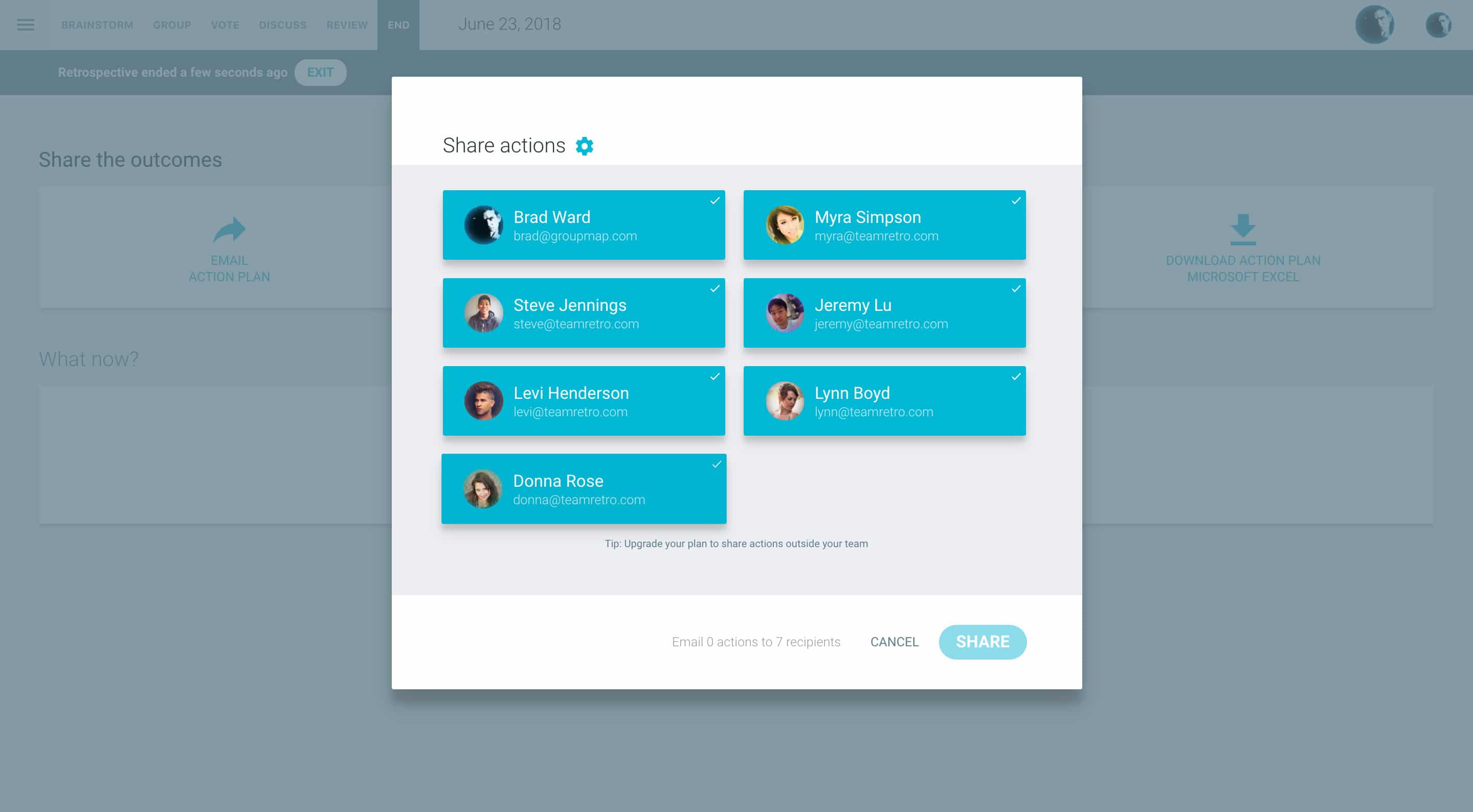What is an Agile retrospective?
The good news is that this format is relatively safe due to its objective nature. Running your meetings digitally saves time and also records ideas, votes and action items. No more having to decipher handwriting and retyping notes.
Agile Retrospective format
What went well?
Focuses on success and things that people are proud of both from a technical or teamwork aspect.
What went less well?
Aims to identify areas for improvement, gaps in processes or misalignment.
What do we want to try next?
Creates a forward-looking perspective and encourages the team to problem solve.
What puzzles us?
Identifies potential challenges, hurdles or barriers that should be addressed in a timely manner.
Suggested Icebreaker questions for Agile retrospectives
- What’s something that has puzzled you outside of work recently?
- Think of a situation when you were caught off guard. What happened and what would you do next time?
- When did you overcome a challenge at home or outside of work that inspired you to further action?
Retro Rehearsal
Invite your team to rehearse the retro referencing the last time they organized a party. then ask them to answer one or more of the following.
- What went well at the party?
- What went less well?
- What would you do at the next party?
- What puzzled you from the after-party?
Ideas and tips for your Agile retrospectives
-
Set the stage. Welcome people and set the tone of the meeting and give them a safe space to share ideas. A great way to do this is to ask “Can we begin now?” and waiting for people to begin.
-
Use the agile retrospective format for new teams to introduce them to the agile agenda.
-
Make brainstorming anonymous to allow people to feel safe when contributing their thoughts. People will feel more engaged when they feel like they can air what they need to.
-
Use the concepts of brain writing – give people “silent time” to write, read and respond to what is being presented. It might just be a minute that can make all the difference.
-
Use the way teams vote to manage culture. You’ll get interesting insights when people vote individually. The last thing you want is the sheep mentality where people simply follow what has already been done.
-
A thank you goes a long way. Give a shout out to the team at the end of the meeting.
-
In face to face meetings, doing things digitally allows you to collect ideas, vote and comment anonymously, and saves manual collation. If running your meeting digitally, use a video conferencing tool to give that personal touch.
-
Rotate the role of facilitator. Changing the role can break the routine.
-
Follow up with an action list that you will check off at the start of the next team retro.
How to run an Agile retrospective in TeamRetro
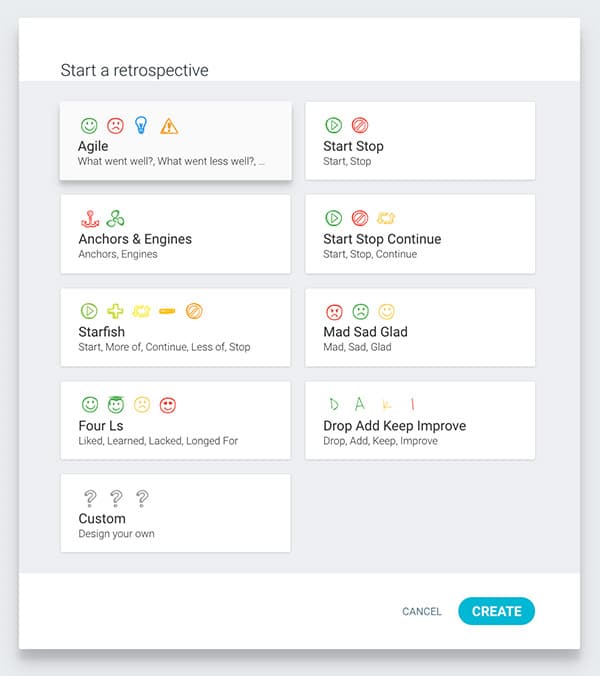
Start your retrospective in a click
Log into TeamRetro and choose your sprint retrospective template.
Discuss the most important things first
You and your team discuss the top voted ideas and can capture deep dive comments. Presentation mode allows you to walk your team through ideas one-by-one and keep the conversation focused.
Review and create actions
Easily facilitate discussion by bringing everyone onto the same page. Create action items, assign owners and due dates that will carry through for review at the next retrospective.
Share the results
Once you have finished your retro, you can share the results and actions with the team. Your retro will be stored so you can revisit them as needed.


